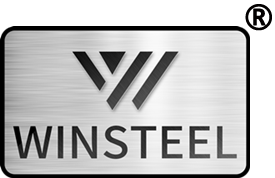First of all, let’s see the structure of stainless steel. Stainless steel is a crystal solid composed of atoms. In addition to iron, it also contains other metal components, such as chromium, nickel, titanium and so on. Chromium and nickel elements have the function of rust prevention and can form a passive film to prevent stainless steel from rusting.
Stainless steel is not easy to rust, because its surface has a very thin, solid, fine and stable chromium rich oxide film. The reason why stainless steel is rust proof is that this oxide film prevents oxygen atoms from penetrating and causing oxidation reaction. The addition of nickel and chromium to stainless steel changes the structure of high chromium steel, so as to greatly improve the corrosion resistance and process performance of stainless steel. The rusting of stainless steel is caused by being oxidized or corroded. The addition of chromium and nickel can enhance its oxidation resistance and corrosion resistance then it is not easy to rust. This is why stainless steel 304 is not easy to rust.
But stainless steel 304 is not always rust proof. The chromium rich oxide film (protective film) on its surface has the ability to resist atmospheric oxidation and corrosion in the medium containing acid, alkali and salt. Its anti-corrosion ability is changed with the chemical composition, processing shape, application conditions and environmental medium type of the steel itself. When the protective film is damaged, rust will naturally occur.
There are many kinds of stainless steel, with different properties and different use environments. Stainless steel 304 has absolutely excellent corrosion resistance in a dry and clean atmosphere, but when it is moved to the coastal area, it will soon rust in the sea fog containing a lot of salt, while 316 performs well.
